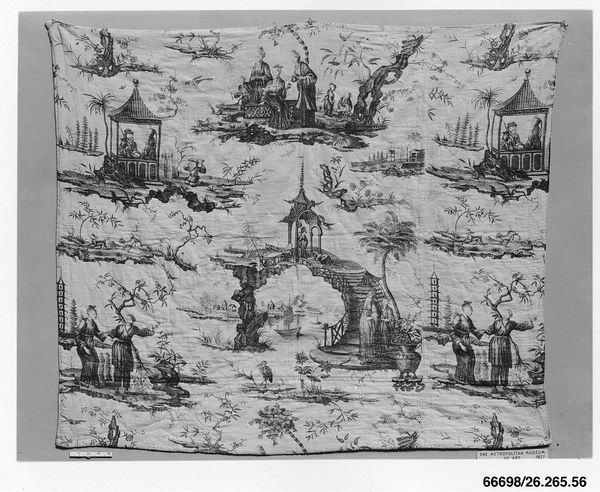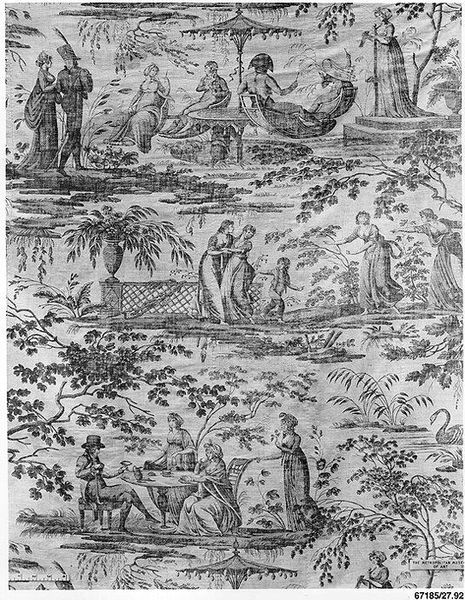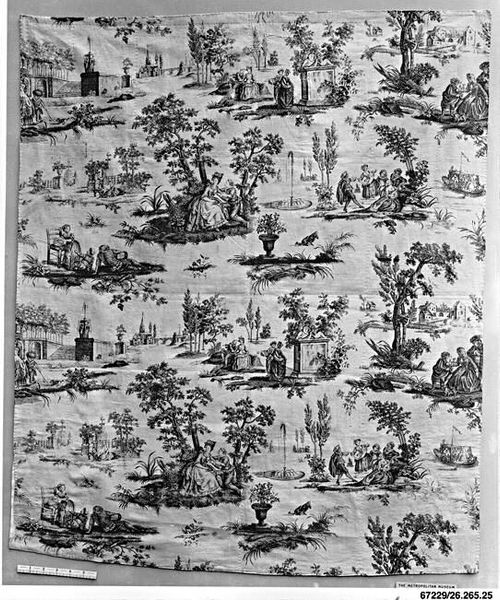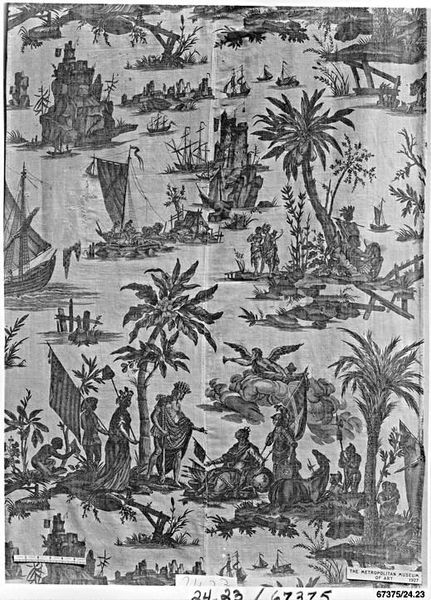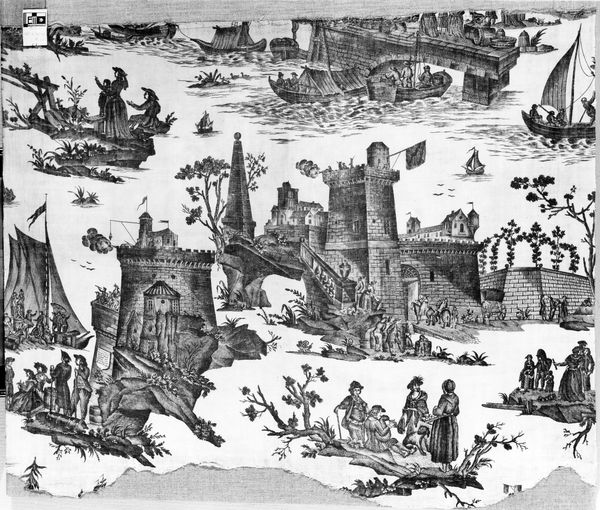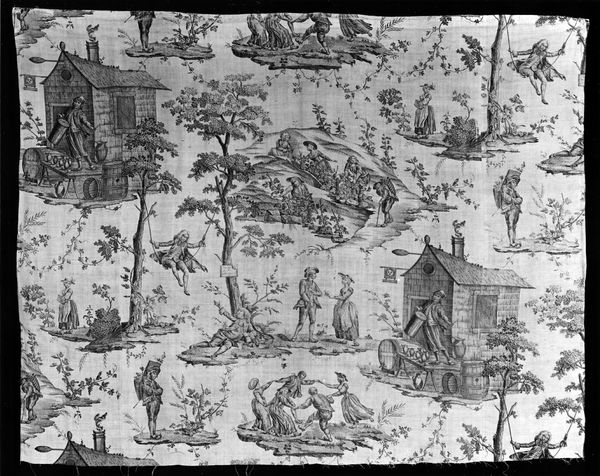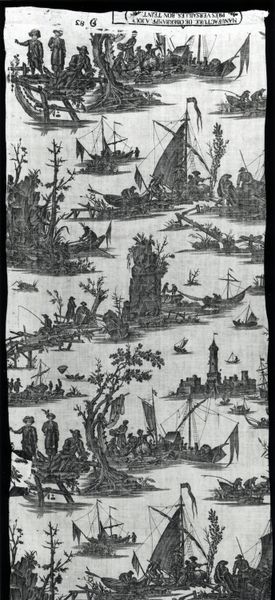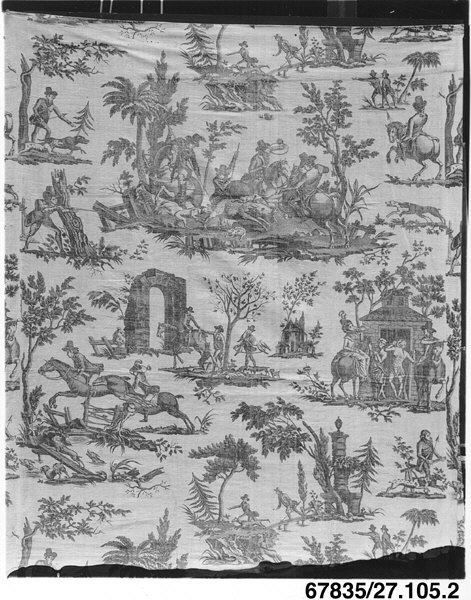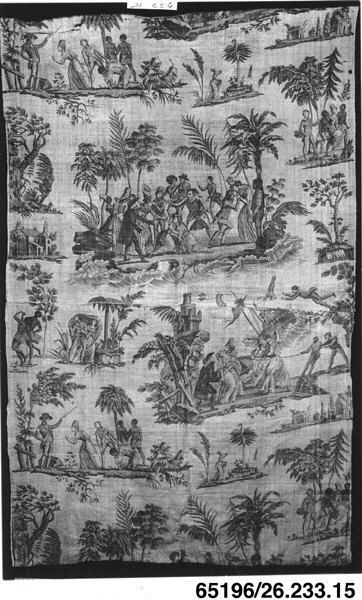
print, textile
#
neoclacissism
# print
#
landscape
#
textile
#
figuration
#
history-painting
#
decorative-art
Dimensions: L. 47 x W. 35 inches 119.4 x 88.9 cm
Copyright: Public Domain
Editor: This striking textile, “Midi de la France” by Louis Hippolyte Lebas, created sometime between 1813 and 1823, depicts pastoral scenes and classical architecture in monochrome. The way the scenes are printed onto the fabric gives it such a unique look. What's your interpretation of this artwork? Curator: I see this textile first and foremost as a product of its time, reflective of shifting social structures and the burgeoning industrial revolution. How was it made? Who had access to it? What narratives were being consumed? Notice the seemingly classical scenes printed *en masse.* We must ask: What is this decorative piece telling us about the era’s relationship to labor and the availability of classical imagery beyond elite circles? Editor: So you're less focused on the artistic skill itself and more on the broader manufacturing and consumption aspects? Curator: Exactly! This wasn’t created in a vacuum. Neoclassicism became fashionable, and that popularity allowed mass production of things like these textiles. It raises interesting questions: Does its mass production cheapen the art, or democratize it? Is this 'high art' at all? Editor: I never thought about textiles being mass produced back then! I suppose it shows how pervasive these trends were. Curator: Precisely. The choice of imagery combined with the production method is a fascinating tension. This wasn't some aristocrat's unique commission. How does the process of textile manufacturing shape and affect artistic and cultural value? Editor: I see. Considering its materiality, it makes me reconsider how "decorative arts" relate to larger social currents. I’ll never look at printed fabric the same way! Curator: Exactly. Always look at art through the lens of how it was made and who was making it, or for whom it was intended.
Comments
No comments
Be the first to comment and join the conversation on the ultimate creative platform.
